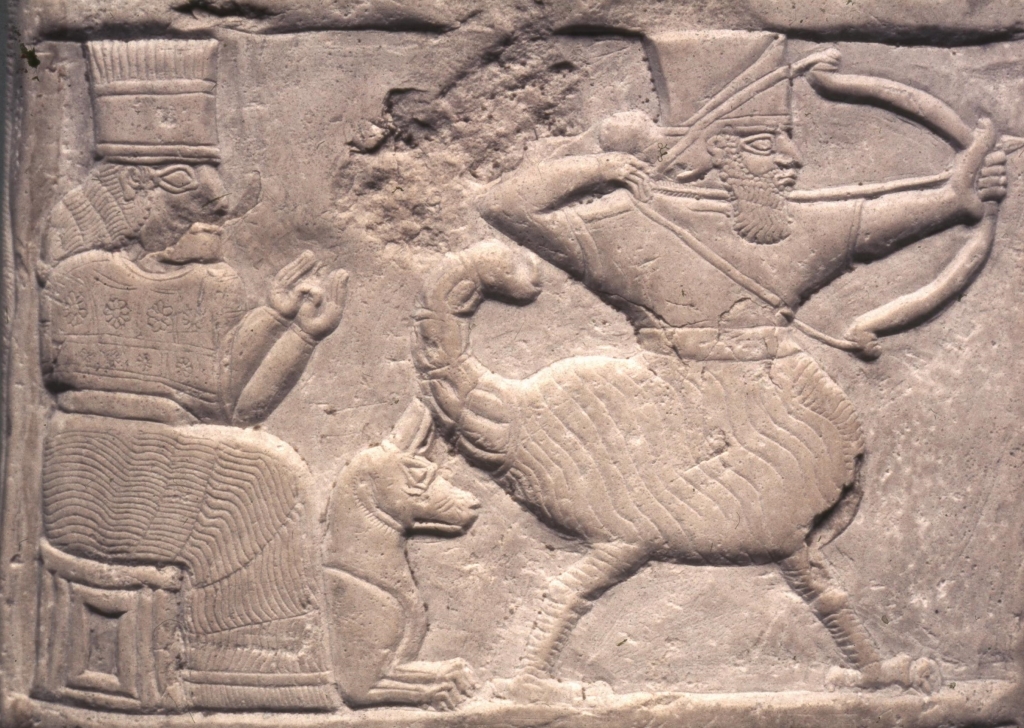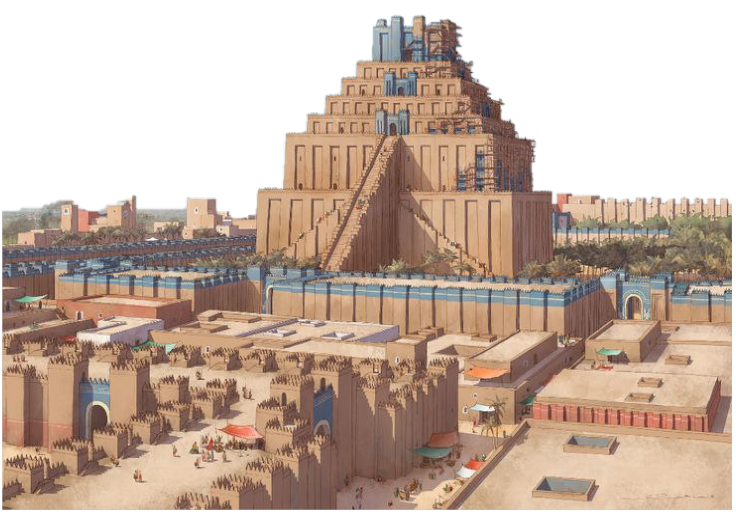Following the downfall of the Kassites, local rulers seized power in Babylon and southern Iraq, each attempting to assert his independence in his own city. But it was not until the Second Dynasty of Isin (the Fourth Dynasty of Babylon) had come to power in Babylon that the Elamites were expelled from Babylon.and most of the cities.unified The King List gives the names of the kings of this Dynasty, which reigned for a total duration of 132 years (ca. 1156-1025B.C.); the most famous among them is King Nebuchadnezzar I.
Nebuchadnezzar I (ca. 1124-1103 B.C.) was a contemporary of Ashur-resh-ishi, King of Assyria. He conducted a series of military campaigns against the Elamites and the in- habitants of the eastern mountains and the western desert with some success. But a new power was rapidly developing and soon Babylon became a second-class power. The As syrians, the eternal rivals of Babylon, constituted a serious challenge to the Kingdom of Babylon. In the time of the Babylonian King Marduk-nadin-akhe, Assyria came under the rule of Tiglath-pileser 1. the powerful Assyrian King who, in spite of the great resistance offered by Babylon, succeeded in imposing his rule over Babylon and her pos sessions.

Limestone stela in the form of a boundary-stone: Nebuchadnezzar I
Far in the south in the Sea-Land a second dynasty (the Fifth Dynasty of Babylon) was founded (ca. 1024-1004 В.С.) consisting of a number of weak princes, and the suc cession of kings who ruled in Babylon belonged to different dynasties, including the Basu Dynasty (1004-985 B.C., known as the Sixth Dynasty of Babylon) and an Elamite Dynasty (known as the Seventh Dynasty of Babylon). In this period of weakness, the kings and rulers oscillated between direct Assyrian control and quasi-independence, while Aramaean tribes continued to penetrate the country, settling on the western side of the Euphrates.
The balance of power had by now shifted again in Favour of the Assyrians. The First Neo-Assyrian Empire overran Babylon and turned it into a part of their empire, as little more than a subject province. Then ensued an obscure period during the Eight Dynasty (ca. 980-732 B.C.), corresponding to a period of inaction in the northern kingdom of As- syria. The subsequent period shows that severe internal strife had affected Babylon and her provinces, and that the gradual tightening of Assyria’s grasp upon the southern kingdom alternated with eventually ineffective struggles on Babylon’s part. In the Second Neo-Assyrian Empire, however, the Assyrian armies under Tiglath-pileser III again invaded the southern kingdom and put an end to the confused situation in Baby- lon for a while. However, the Chaldaean ruler of the Sea-Land, Marduk-apal-iddina (Merodach-baladan, ca. 721-710 B.C., of the Ninth Dynasty of Babylon, 731-627 B.C.). knowing that Sargon, the Assyrian King, had his hands tied at the beginning of his reign by domestic disorders, equipped a military campaign, occupied Babylon and laid claim to her throne. Later; once he had settled his domestic tasks and subjugated his other foes in the north and west, Sargon was able to turn his attention again to the south and managed to expel Merodach-baladan from Babylon. After his expulsion. Merodach baladan sought safety by fleeing to the far south from where he allied himself with the Elamites and resumed raiding and harassing Babylonian territory, now under the new
Assyrian king, Sennacherib, Sargon’s son Then, assisted by Elamite officers and PMerodach-baladan mustered the population of the south against the Assyrians and, entering the capital city, styled himself again King of Babylon. This situation terribly enraged the powerful King Sennacherib. He organized a formidable campaign which swept the entire south down to the far end of the Sea-Land and the Gulf. Incensed with rage Sennacherib destroyed Babylon, devastated her palaces and ravaged the city by deflecting across her the course of the Euphrates (689 B.C.).
But when Sennacherib’s son Esarhaddon ascended the throne of Assyria his first act was to begin the rebuilding of Babylon. He attempted to solve the problem of his successor by installing one of his sons, Shamashshum-ukin, as viceroy in Babylonia on the understanding that he would keep loyalty and allegiance to his brother Ashur-bani-pal, the legitimate hair to the throne of Assyria. After a period of relative peace. Shamash-shum-ukin proclaimed himself King of Babylon and revolted against his brother’s authority. In his rebellion he found support not onlyin Elam but also from the Aramaeans and Chaldeans. But the force at the disposal of the Assyrian King was still equal to this challenge and Assur-bani-pal organized a retaliatory campaign, marched into Babylonia, and captured Babylon; his brother Shamashshum-ukin met his death in the flames of his own palace. The Assyrian King then invaded Elam and destroyed Susa, its capital city, In Babylon, a Chaldaean named Kandalanu(ca. 648-627 B.C.) was appointed the new viceroy of Babylon.
Depleted by hard and bloody wars, the Assyrian Empire was weaker than it had ever been, while in Babylon a strong dynasty was founded by Naboplassar the Chaldaean, who allied himself with the Medes. The combined forces launched a major offensive against Assyria and after fierce fighting besieged Nineveh and captured her. Thus ended the Assyrian Empire and began the Chaldaean Kingdom of Babylon, to be described below.
Faraj Basmachi + Harvard University + British Museum + Iraq Museum + Louvre Museum + University of Chicago


